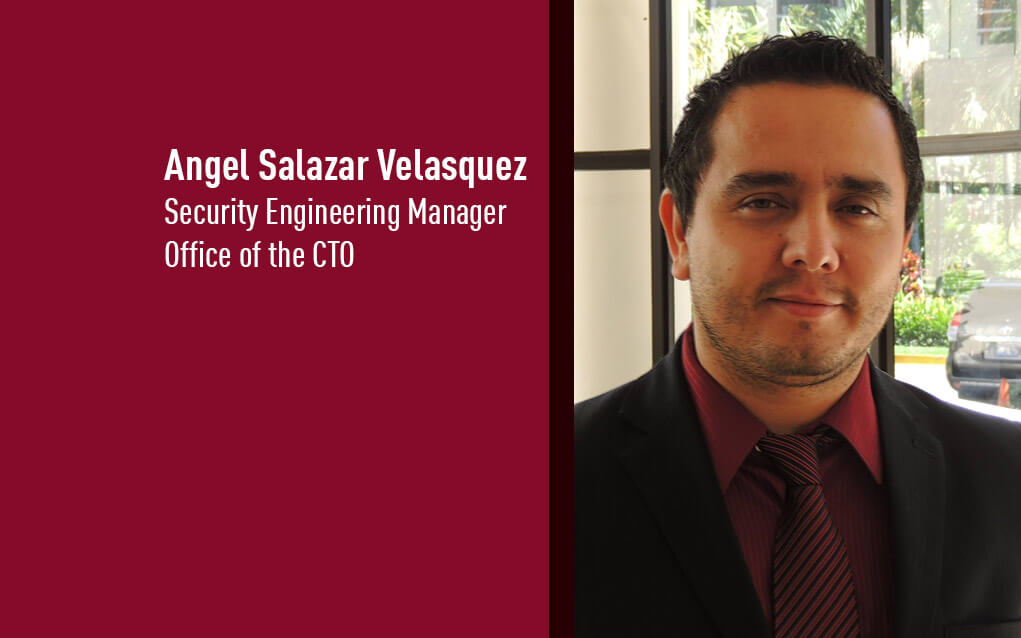
With over two decades of experience in the cyber security industry, I specialize in advising organizations on how to optimize their financial investments through the design of effective and cost-efficient cyber security strategies. Since the year 2000, I’ve had the privilege of collaborating with various channels and enterprises across the Latin American region, serving in multiple roles ranging from Support Engineer to Country Manager. This extensive background has afforded me a unique perspective on the evolving threat landscape and the shifting needs of businesses in the digital world.
The dynamism of technological advancements has transformed cyber security demands, necessitating more proactive approaches to anticipate and prevent threats before they can impact an organization. Understanding this ever-changing landscape is crucial for adapting to emerging security challenges.
In my current role as the Channel Engineering Manager for LATAM at Check Point, I also serve as part of the Cybersecurity Evangelist team under the office of our CTO. I am focused on merging technical skills with strategic decision-making, encouraging organizations to concentrate on growing their business while we ensure security.
The Cyber Security Mesh framework can safeguard businesses from unwieldy and next-generation cyber threats. In this interview, Check Point Security Engineering Manager Angel Salazar Velasquez discusses exactly how that works. Get incredible insights that you didn’t even realize that you were missing. Read through this power-house interview and add another dimension to your organization’s security strategy!
Would you like to provide an overview of the Cyber Security Mesh framework and its significance?
The Cyber Security Mesh framework represents a revolutionary approach to addressing cyber security challenges in increasingly complex and decentralized network environments. Unlike traditional security models that focus on establishing a fixed ‘perimeter’ around an organization’s resources, the Mesh framework places security controls closer to the data, devices, and users requiring protection. This allows for greater flexibility and customization, more effectively adapting to specific security and risk management needs.
For CISOs, adopting the Cyber Security Mesh framework means a substantial improvement in risk management capabilities. It enables more precise allocation of security resources and offers a level of resilience that is difficult to achieve with more traditional approaches. In summary, the Mesh framework provides an agile and scalable structure for addressing emerging threats and adapting to rapid changes in the business and technology environment.
How does the Cyber Security Mesh framework differ from traditional cyber security approaches?
Traditionally, organizations have adopted multiple security solutions from various providers in the hope of building comprehensive defense. The result, however, is a highly fragmented security environment that can lead to a lack of visibility and complex risk management. For CISOs, this situation presents a massive challenge because emerging threats often exploit the gaps between these disparate solutions.
The Cyber Security Mesh framework directly addresses this issue. It is an architecture that allows for better interoperability and visibility by orchestrating different security solutions into a single framework. This not only improves the effectiveness in mitigating threats but also enables more coherent, data-driven risk management. For CISOs, this represents a radical shift, allowing for a more proactive and adaptive approach to cyber security strategy.
Could you talk about the key principles that underly Cyber Security Mesh frameworks and architecture?
Understanding the underlying principles of Cyber Security Mesh is crucial for evaluating its impact on risk management. First, we have the principle of ‘Controlled Decentralization,’ which allows organizations to maintain control over their security policies while distributing implementation and enforcement across multiple security nodes. This facilitates agility without compromising security integrity.
Secondly, there’s the concept of ‘Unified Visibility.’ In an environment where each security solution provides its own set of data and alerts, unifying this information into a single coherent ‘truth’ is invaluable. The Mesh framework allows for this consolidation, ensuring that risk-related decision-making is based on complete and contextual information. These principles, among others, combine to provide a security posture that is much more resilient and adaptable to the changing needs of the threat landscape.
How does the Cyber Security Mesh framework align with or complement Zero Trust?
The convergence of Cyber Security Mesh and the Zero Trust model is a synergy worth exploring. Zero Trust is based on the principle of ‘never trust, always verify,’ meaning that no user or device is granted default access to the network, regardless of its location. Cyber Security Mesh complements this by decentralizing security controls. Instead of having a monolithic security perimeter, controls are applied closer to the resource or user, allowing for more granular and adaptive policies.
This combination enables a much more dynamic approach to mitigating risks. Imagine a scenario where a device is deemed compromised. In an environment that employs both Mesh and Zero Trust, this device would lose its access not only at a global network level but also to specific resources, thereby minimizing the impact of a potential security incident. These additional layers of control and visibility strengthen the organization’s overall security posture, enabling more informed and proactive risk management.
How does the Cyber Security Mesh framework address the need for seamless integration across diverse technologies and platforms?
The Cyber Security Mesh framework is especially relevant today, as it addresses a critical need for seamless integration across various technologies and platforms. In doing so, it achieves Comprehensive security coverage, covering all potential attack vectors, from endpoints to the cloud. This approach also aims for Consolidation, as it integrates multiple security solutions into a single operational framework, simplifying management and improving operational efficiency.
Furthermore, the mesh architecture promotes Collaboration among different security solutions and products. This enables a quick and effective response to any threat, facilitated by real-time threat intelligence that can be rapidly shared among multiple systems. At the end of the day, it’s about optimizing security investment while facing key business challenges, such as breach prevention and secure digital transformation.
Can you discuss the role of AI and Machine Learning within the Cyber Security Mesh framework/architecture?
Artificial Intelligence (AI) and Machine Learning play a crucial role in the Cyber Security Mesh ecosystem. These technologies enable more effective and adaptive monitoring, while providing rapid responses to emerging threats. By leveraging AI, more effective prevention can be achieved, elevating the framework’s capabilities to detect and counter vulnerabilities in real-time.
From an operational standpoint, AI and machine learning add a level of automation that not only improves efficiency but also minimizes the need for manual intervention in routine security tasks. In an environment where risks are constantly evolving, this agility and ability to quickly adapt to new threats are invaluable. These technologies enable coordinated and swift action, enhancing the effectiveness of the Cyber Security Mesh.
What are some of the challenges or difficulties that organizations may see when trying to implement Mesh?
The implementation of a Cyber Security Mesh framework is not without challenges. One of the most notable obstacles is the inherent complexity of this mesh architecture, which can hinder effective security management. Another significant challenge is the technological and knowledge gap that often arises in fragmented security environments. Added to these is the operational cost of integrating and maintaining multiple security solutions in an increasingly diverse and dynamic ecosystem.
However, many of these challenges can be mitigated if robust technology offering centralized management is in place. This approach reduces complexity and closes the gaps, allowing for more efficient and automated operation. Additionally, a centralized system can offer continuous learning as it integrates intelligence from various points into a single platform. In summary, centralized security management and intelligence can be the answer to many of the challenges that CISOs face when implementing the Cyber Security Mesh.
How does the Cyber Security Mesh Framework/Architecture impact the role of traditional security measures, like firewalls and IPS?
Cyber Security Mesh has a significant impact on traditional security measures like firewalls and IPS. In the traditional paradigm, these technologies act as gatekeepers at the entry and exit points of the network. However, with the mesh approach, security is distributed and more closely aligned with the fluid nature of today’s digital environment, where perimeters have ceased to be fixed.
Far from making them obsolete, the Cyber Security Mesh framework allows firewalls and IPS to transform and become more effective. They become components of a broader and more dynamic security strategy, where their intelligence and capabilities are enhanced within the context of a more flexible architecture. This translates into improved visibility, responsiveness, and adaptability to new types of threats. In other words, traditional security measures are not eliminated, but integrated and optimized in a more versatile and robust security ecosystem.
Can you describe real-world examples that show the use/success of the Cyber Security Mesh Architecture?
Absolutely! In a company that had adopted a Cyber Security Mesh architecture, a sophisticated multi-vector attack was detected targeting its employees through various channels: corporate email, Teams, and WhatsApp. The attack included a malicious file that exploited a zero-day vulnerability. The first line of defense, ‘Harmony Email and Collaboration,’ intercepted the file in the corporate email and identified it as dangerous by leveraging its Sandboxing technology and updated the information in its real-time threat intelligence cloud.
When the same malicious file tried to be delivered through Microsoft Teams, the company was already one step ahead. The security architecture implemented also extends to collaboration platforms, so the file was immediately blocked before it could cause harm. Almost simultaneously, another employee received an attack attempt through WhatsApp, which was neutralized by the mobile device security solution, aligned with the same threat intelligence cloud.
This comprehensive and coordinated security strategy demonstrates the strength and effectiveness of the Cyber Security Mesh approach, which allows companies to always be one step ahead, even when facing complex and sophisticated multi-vector attacks. The architecture allows different security solutions to collaborate in real-time, offering effective defense against emerging and constantly evolving threats.
The result is solid security that blocks multiple potential entry points before they can be exploited, thus minimizing risk and allowing the company to continue its operations without interruption. This case exemplifies the potential of a well-implemented and consolidated security strategy, capable of addressing the most modern and complex threats.
Is there anything else that you would like to share with the CyberTalk.org audience?
To conclude, the Cyber Security Mesh approach aligns well with the three key business challenges that every CISO faces:
Breach and Data Leak Prevention: The Cyber Security Mesh framework is particularly strong in offering an additional layer of protection, enabling effective prevention against emerging threats and data breaches. This aligns perfectly with our first ‘C’ of being Comprehensive, ensuring security across all attack vectors.
Secure Digital and Cloud Transformation: The flexibility and scalability of the Mesh framework make it ideal for organizations in the process of digital transformation and cloud migration. Here comes our second ‘C’, which is Consolidation. We offer a consolidated architecture that unifies multiple products and technologies, from the network to the cloud, thereby optimizing operational efficiency and making digital transformation more secure.
Security Investment Optimization: Finally, the operational efficiency achieved through a Mesh architecture helps to optimize the security investment. This brings us to our third ‘C’ of Collaboration. The intelligence shared among control points, powered by our ThreatCloud intelligence cloud, enables quick and effective preventive action, maximizing the return on security investment.
In summary, Cyber Security Mesh is not just a technological solution, but a strategic framework that strengthens any CISO’s stance against current business challenges. It ideally complements our vision and the three C’s of Check Point, offering an unbeatable value proposition for truly effective security.




